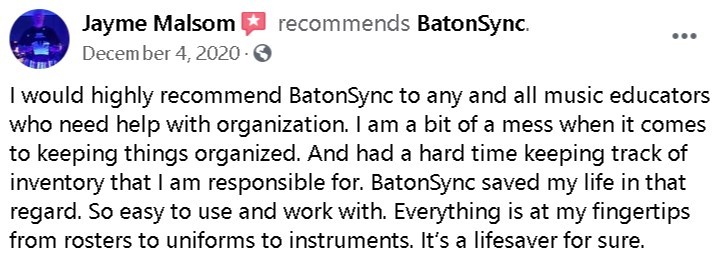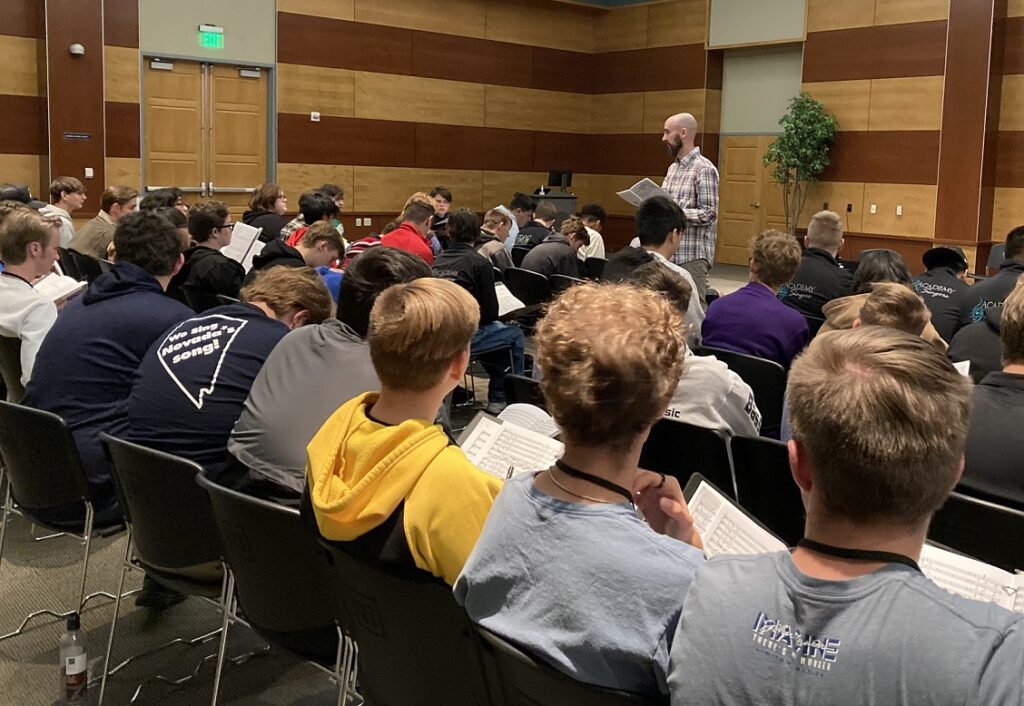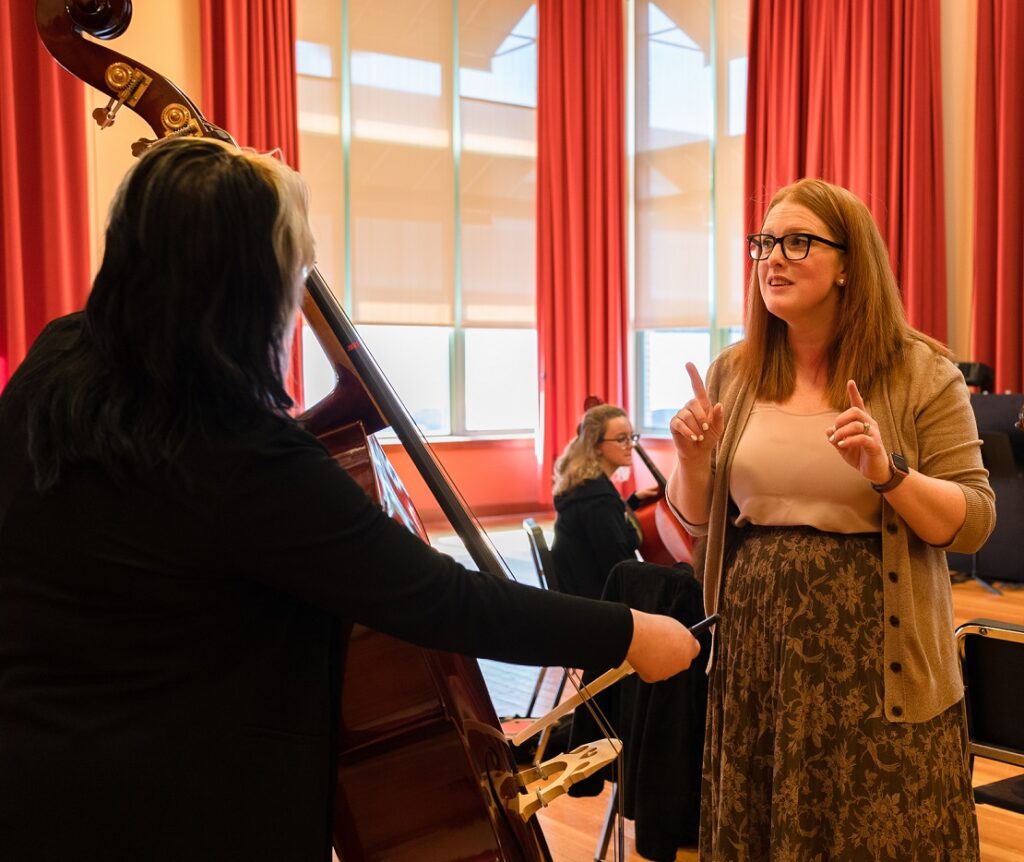Tagged Under:
I Created an Organization System for Music Directors
A music educator created a software program to help keep track of instruments, uniforms, finances and more.
One of the challenges of being a band, orchestra, choir or general music teacher is how to manage everything in the classroom.
Keeping track of instruments, uniforms, lockers, equipment, finances, the music library, ensembles and so much more can be overwhelming. It’s a lot for one person (or even a staff) to process.
When I first started teaching band, I was the assistant at Topeka High School, the head director at Robinson Middle School, and I also taught beginning band at Meadows Elementary School. My co-director at the high school had been teaching for more than 35 years and kept track of everything on sticky notes, note cards and on papers in several binders and on numerous clipboards. So much paper! There was no known inventory at any of the schools for anything.
Over the next several years, I buried myself in spreadsheets to try to bring some sort of organizational structure to the band programs at my three schools. With about 300 students per day and almost 200 instruments to inventory, plus uniforms and everything else, it was very time-consuming.
 It was impossible to do the necessary legwork during the school year, so my husband, Kris Antonetti, and I worked in the buildings during the summer when the air conditioning was not turned on. At the time, we only had desktop computers — no laptops or tablets — so we started in the hot storage room, writing down instrument model numbers and serial numbers on a yellow legal pad. Then we went back to my office to input this information on my computer. We spent hours doing this.
It was impossible to do the necessary legwork during the school year, so my husband, Kris Antonetti, and I worked in the buildings during the summer when the air conditioning was not turned on. At the time, we only had desktop computers — no laptops or tablets — so we started in the hot storage room, writing down instrument model numbers and serial numbers on a yellow legal pad. Then we went back to my office to input this information on my computer. We spent hours doing this.
A couple of weeks after we had finished everything at my middle school, our district IT staff “cloned” all of the computers — that is, they deleted everything in order for teachers to have a “fresh start” at the start of the new school year. Our inventory records were lost — I was devastated.
A Better Way
Kris said, “There must be a better way to do this.”
While music classroom management software programs are available, the cost is prohibitive because of the number of levels of subscriptions I would need based on teaching at three schools with about 10 different ensembles.
We brainstormed options and decided to create a solution that was based on the director, not schools or number of ensembles. That way, directors could take their subscription with them when they switched jobs.
Luckily, Kris has a background in software development. He could also relate to the scope of what was needed because he was a band kid and played trombone in college while getting degrees in aerospace engineering and computer science.
 We started with the problems I faced and then gathered ideas from other directors to see what was needed most. Many of our music education friends faced similar challenges in their classrooms. We wanted to focus on the inventory aspect of organization, so we started developing instrument and uniform management as well as the ability to check these items out to students and to organize students into ensembles.
We started with the problems I faced and then gathered ideas from other directors to see what was needed most. Many of our music education friends faced similar challenges in their classrooms. We wanted to focus on the inventory aspect of organization, so we started developing instrument and uniform management as well as the ability to check these items out to students and to organize students into ensembles.
Kris and I spent many afternoons at the public library, using a workspace with wall-sized whiteboards to brainstorm the best ways to implement our ideas — we made and color-coordinated lists, drew diagrams, designed flow charts and more.
We finally procured a giant whiteboard for our garage and continued our planning and designing from home.
Help from Our Network
We decided to call our new program BatonSync. We wanted to keep everything simple in the design, but we had no idea how to run a business. The more we talked to people, the more questions we had, and the more we realized that we needed help with what we didn’t know.
 We met with Dave Gnojek, the associate design director at The University of Kansas’ Office of Public Affairs — and someone I knew from the saxophone studio at KU — to help us build a brand package with colors, a logo and a general idea of design and layout for our website and marketing materials.
We met with Dave Gnojek, the associate design director at The University of Kansas’ Office of Public Affairs — and someone I knew from the saxophone studio at KU — to help us build a brand package with colors, a logo and a general idea of design and layout for our website and marketing materials.
We also met with lawyer Jade Brown, another saxophone player, to help us with our business documents, privacy policy, terms of use and trademarks. For help with business accounts and financial coaching, we went to Scott Holloman, CPA, a parent of some of my former band students.
Working with our network of connections and other local small businesses was an essential part of our process of building BatonSync.
Testing Phase, Adjustments and Additions
BatonSync’s first stage kept track of instruments, uniforms, ensembles and students. At this point, the program was ready to be tested, so we asked several of our friends who are band, choir and general music teachers to try it out.
This was a critical time for us because we received direct feedback from directors about what they wanted in an organizational program. We added many new features based on their suggestions, such as:
- Equipment and locker tracking
- A financial section for trips, fees, fundraising, vendor payments and more
- Bulk adding uniform components
- Upload templates for all inventories
- A music library for sheet music and digital music
- Notes and histories on individual inventory items and students
- Repair notes for instruments
- Reporting so that directors can give inventory printouts to principals and building leaders
The comments, opinions and advice we received during BatonSync’s beta stage were invaluable.
The Future of BatonSync
We launched BatonSync in 2019. The program is simple and intuitive — no training is necessary. Most users just need to read the user guide.
We wanted to make the program affordable. The current subscription price of $20 each month ($240 a year) is based on teaching one private lesson per month. We plan to add a district subscription level for larger districts with centralized instrument inventories, music libraries and everything else.
Currently, directors in 15 states use BatonSync. We continue to grow organically based on the recommendations of directors who use the program. Here’s what some people have said about BatonSync (from our Facebook page):




Our goal is to build a community of directors who use BatonSync and share ideas — please follow BatonSync on Facebook, Instagram, Twitter and YouTube. We plan to attend more conferences and talking to more directors about BatonSync.
BatonSync will save you time and eliminate stress from your job so you can focus on being an outstanding music educator. Contact us at support@batonsync.com or me directly at jantonetti@batonsync.com for information.















